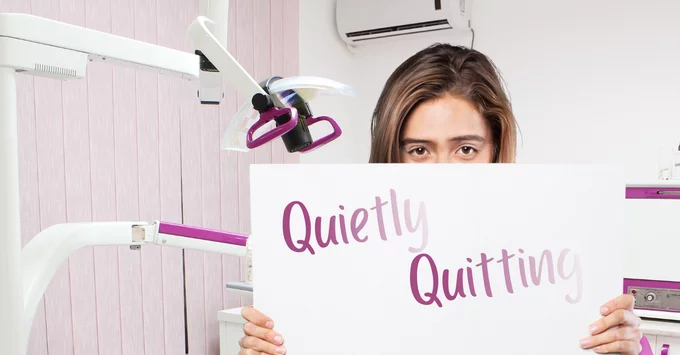By Azriél Crews on behalf of OnDiem
March 27, 2024
Imagine this scenario: you’re a dental hygienist looking for work. You find a great practice that hires you right away. However, to cut costs, the practice owner classifies you as a 1099 contractor instead of an employee. Since all of your hygienist peers work as 1099 contractors, you don’t see any issue with this arrangement. What you don’t know is that according to the law, dental hygienists and assistants working under a dentist’s supervision must be classified as W-2 employees.[1]
If you are misclassified as a 1099 contractor, you’re responsible for your own workers’ compensation, health insurance, and other benefits—and dental practices who misclassify their workers can face serious legal penalties. Proper classification is important to protect workers’ rights and avoid such issues.
According to recent data, between 10-30% of workers in the United States are misclassified as 1099 contractors.[2] It is extremely common for dental hygienists and assistants to be classified this way. Understanding these distinctions is crucial, as it can have significant implications for hygienists’ careers and financial well-being. In this article, we’ll dive into the variances between these classifications and explore why it matters specifically for dental hygienists and assistants.
What is employee misclassification and why does it happen?
Employee misclassification occurs when workers are mistakenly classified as either independent contractors (1099) or employees (W-2).[3] This misclassification, whether intentional or accidental, carries significant legal consequences for businesses and financial consequences for the workers affected. Misclassification places additional economic burdens on workers and deprives them of certain labor rights.
There are a few reasons why practices misclassify dental hygienists and assistants:
- Urgency: Dental practices may need to hire someone quickly, so they may misclassify them as 1099 contractors in order to fill their shift needs promptly and to avoid cancellations.
- Lack of HR/Compliance: Smaller practices often do not have a dedicated HR or compliance department to support their business. As a result, some practices may misclassify employees simply because they lack the necessary knowledge.
- Using noncompliant staffing platforms: Some practices depend on dental staffing platforms to fulfill shifts. However, many of these platforms misclassify workers as 1099 contractors. Although the practice may assume that all classifications are correct when working through these platforms, unfortunately, many of them are not.
Key Differences Between 1099 and W-2 Classification
Use this chart to understand how 1099 contractors and W-2 employees differ.
1099 Contractor |
W-2 Employee |
| ● Also referred to as “self-employed” or “independent contractor”
● Responsible for paying both their employer’s and their own tax burden ● Forgoes all benefits and protections such as paid time off, workers’ compensation, malpractice insurance, etc. ● Usually (though not always) hired as a temporary worker |
● Also known as an employee
● Taxes are withheld through the employer’s payroll, and a W-2 tax form is provided by the end of the year. Employer pays their share of their tax burden. ● May receive legal protections such a minimum wage and overtime, plus access to benefits such as PTO, workers’ comp, and malpractice insurance. ● Can be a temporary or full-time worker |
What qualifies dental hygienists as W-2 employees?
The IRS uses a 3-factor test to determine what constitutes a W-2 employee, and most dental hygienists and assistants meet all three of these factors.[4]
- Behavioral: Does the company control or have the right to control what the worker does and how the worker does their job?
- Financial: Are the financial aspects of the worker’s job controlled by the payer? This includes how the worker is paid, whether expenses are reimbursed, and who provides the supplies.
- Type of Relationship: Are there written contracts or employee-type benefits such as a pension plan, insurance, or vacation pay? Will the relationship continue, and is the work a key aspect of the business?
In order to be classified as a 1099 contractor, the practice must provide proof that these three factors have not been met.
Are there exceptions?
Some states in the U.S. allow dental hygienists to get a license to operate independently and set up their own practices with their own equipment. This is distinctly different from being classified as a 1099 contractor and working for someone else’s dental practice. Federal IRS law prohibits hygienists from being licensed as 1099 contractors while working under a dentist’s supervision.[5]
What are the risks of misclassifying W-2 employees as 1099 contractors?
Ultimately, it is the legal responsibility of the employer (in this case, the dental practice) to use proper classification in their hiring practices.[6] However, there are significant financial and potential legal risks to hygienists who are misclassified:
Dental Practices |
Dental Hygienists & Dental Assistants |
| ● Practices can be sued and required to pay back taxes, back wages, and penalties for misclassification.
|
● 1099 contractors are responsible for paying their employer’s tax burden, which can result in lower take-home pay. 1099 workers injured on the job are also not entitled to workers’ compensation benefits.
|
“Under applicable IRS and department of labor regulations, it is improper to classify most hygienists who work at dental practices as 1099 contractors, even when they are only working part time or as a temp. The regulations are very clear and there can be significant consequences for misclassification of employees as independent contractors. Employers across the country have been investigated and fined for violating these regulations. In my experience many practice owners across the industry are needlessly exposing themselves and their staff to significant legal risk by misclassifying employees as independent contractors.”
—Brian A. Colao, Director, DSO Industry Group at Dykema
What do you do if you’ve been misclassified?
Up to 95% of workers who claimed misclassification were properly re-classified upon review.[7] Learn about what to do if you’ve been misclassified in this clip from a recent webinar about employee misclassifications:
Speaker: Crystal Spring, Executive Director for Smiles Across Montana, and Relationship Development Manager for onDiem Dental Staffing.
By understanding the differences between 1099 and W2 classifications, employers and employees can navigate the legal and financial landscape more effectively. The ADHA remains committed to providing resources and education to empower hygienists in their professional journeys.
____________________________________
Azriél Crews is a Brooklyn-based writer and editor, and composed this article on behalf of OnDiem. ADHA and OnDiem share a sponsorship and membership-benefit relationship. To learn more about the ADHA-OnDiem partnership visit https://hub.ondiem.com/care-benefits-with-adha. For questions about this article or the ADHA-OnDiem partnership, please contact ADHA Communications at [email protected].
[1] American Dental Association News (ADA News). (April 2023). Navigating 1099 versus W2 classification. https://adanews.ada.org/ada-news/2023/april/navigating-1099-versus-w2-classification/
[2] National Employment Law Project (NELP). (October 2020). Independent Contractor Misclassification Imposes Huge Costs on Workers and Federal and State Treasuries [Policy Brief]. https://s27147.pcdn.co/wp-content/uploads/Independent-Contractor-Misclassification-Imposes-Huge-Costs-Workers-Federal-State-Treasuries-Update-October-2020.pdf
[3] Department of Labor (DOL). Employer Misclassification of Workers. https://dol.ny.gov/employer-misclassification-workers
[4] Internal Revenue Service (IRS). Independent Contractor (Self-Employed) or Employee?
[5] American Dental Hygienists’ Association (ADHA). Direct Access States. (August 2022). https://www.adha.org/wp-content/uploads/2023/03/ADHA_Direct_Access_Chart_2022-08-1.pdf
[6] Department of Labor (DOL). Myths About Misclassification. https://www.dol.gov/agencies/whd/flsa/misclassification/myths/detail
[7] Harvard Business Review (HBR). (July 2017). Lots of Employees Get Misclassified as Contractors. Here’s Why It Matters. https://hbr.org/2017/07/lots-of-employees-get-misclassified-as-contractors-heres-why-it-matters



